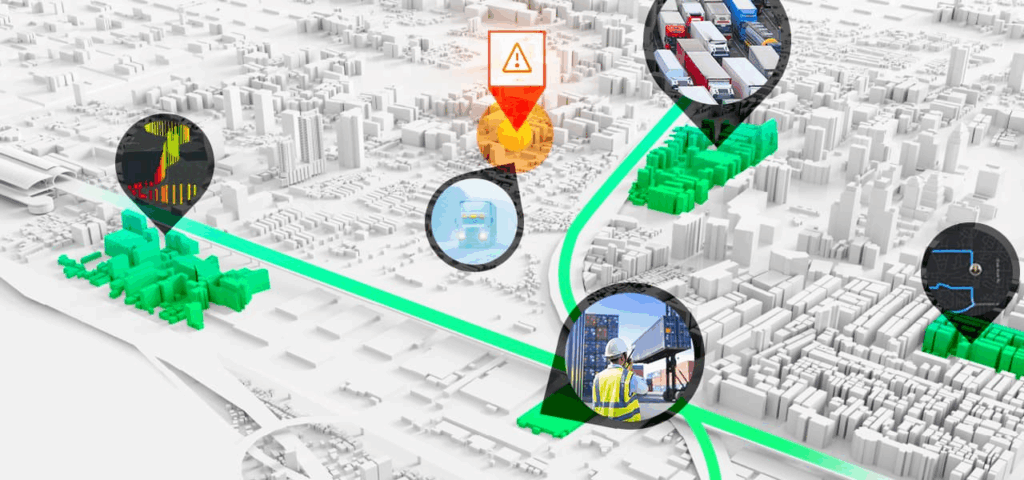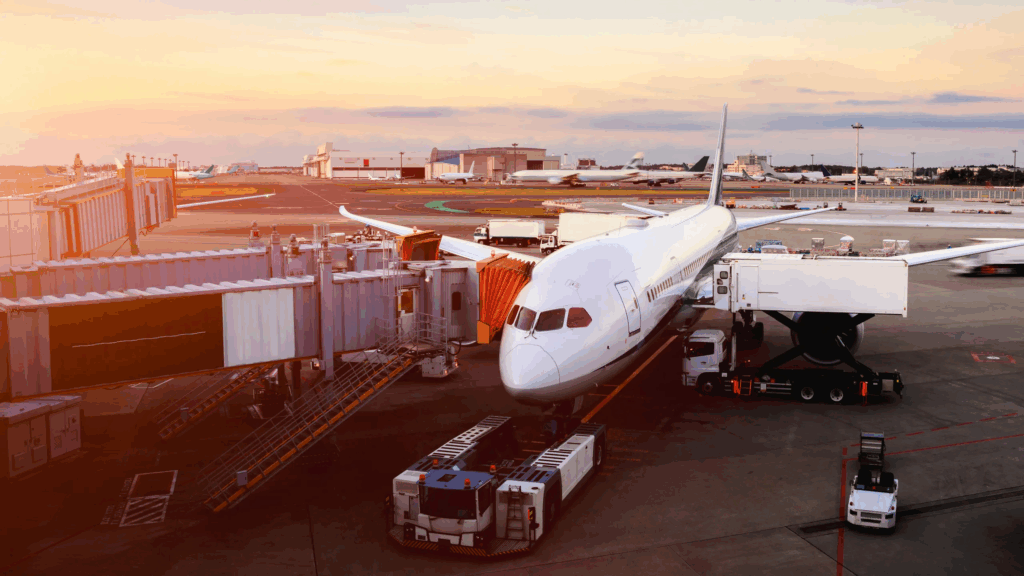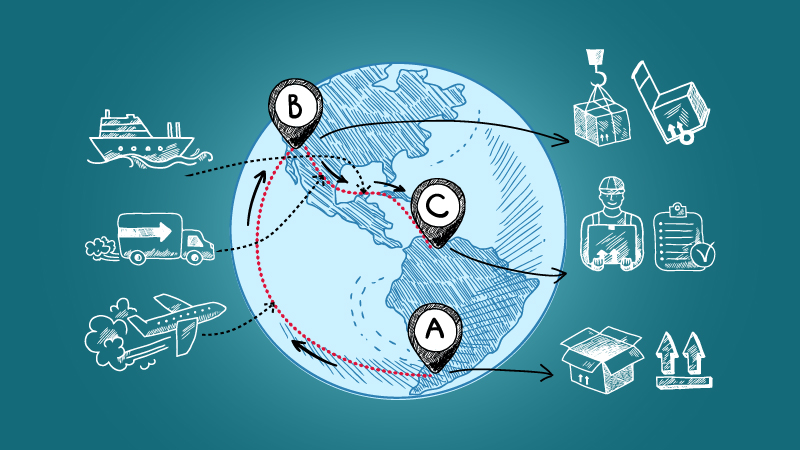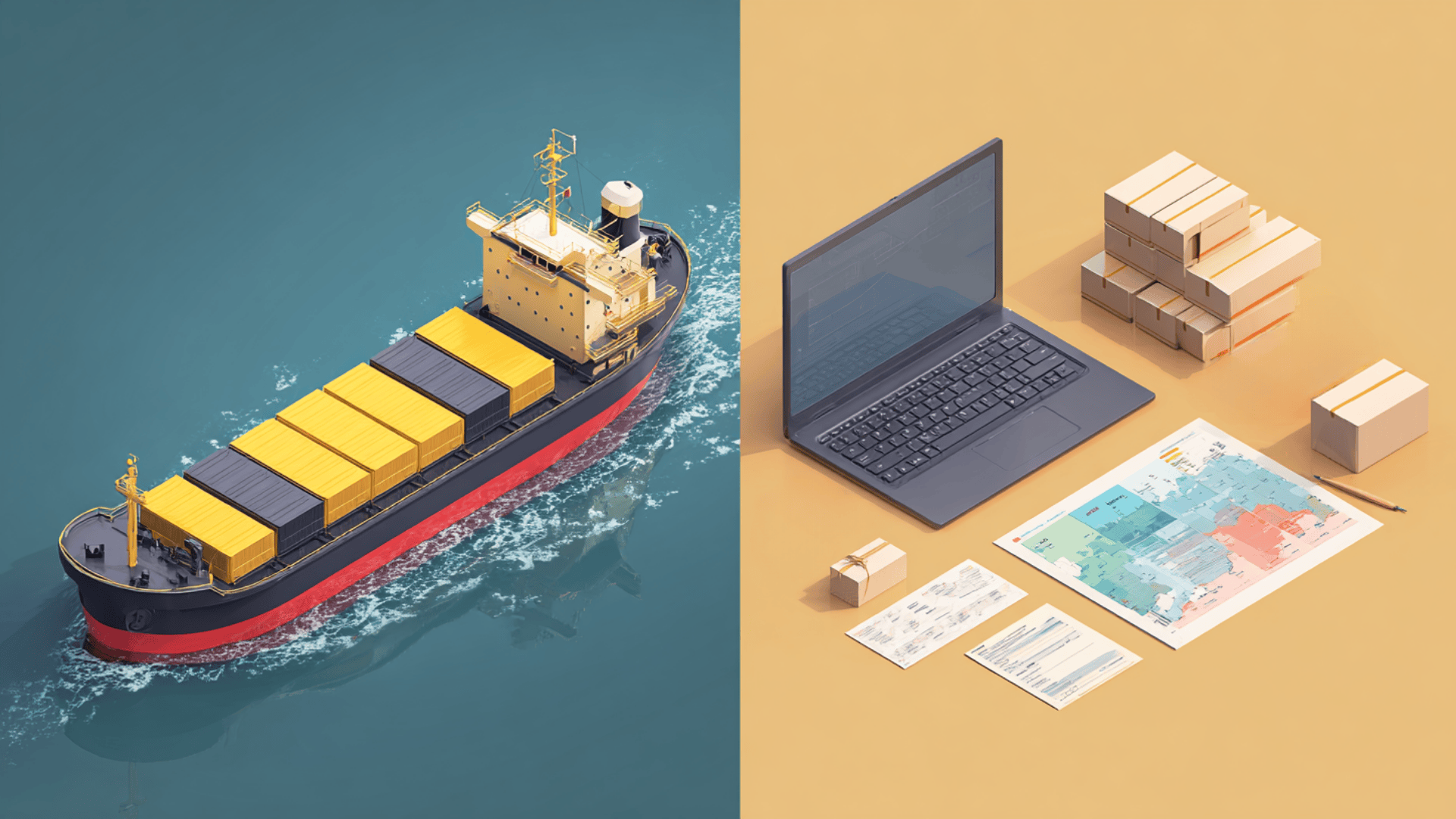Seguimiento de envíos internacionales de productos perecederos: el tiempo lo es todo
El transporte transfronterizo de productos perecederos plantea retos únicos. Desde el mantenimiento de la frescura de los productos hasta el cumplimiento de los estrictos plazos de entrega, todo el proceso depende en gran medida de la precisión de la cadena de suministro. Seguimiento de envíos internacionales. Sin ella, las empresas corren el riesgo de perder tanto los productos como la confianza de los clientes. En Paquete postalEntendemos que la visibilidad y la puntualidad son la espina dorsal del éxito de las entregas globales.

1. Por qué los productos perecederos requieren una atención especial
Productos perecederos son productos con una vida útil corta, como alimentos frescos, flores, productos farmacéuticos y otros artículos sensibles a la temperatura. A diferencia de la carga general, no pueden permitirse retrasos ni una manipulación incorrecta.
Las razones son sencillas:
- Vida útil corta: Cada hora extra en tránsito reduce la frescura y el valor.
- Normativa estricta: Los procesos de despacho de aduanas y de conformidad son más estrictos.
- Sensibilidad a la temperatura: Los productos pueden requerir refrigeración constante o entornos controlados.
- Fragilidad en la manipulación: Muchos productos perecederos son físicamente delicados y se dañan con facilidad.
- Expectativas de los clientes: Los compradores esperan que las entregas de productos perecederos lleguen frescas, sin excusas.
En este contexto, Seguimiento de envíos internacionales se convierte en la salvaguardia que garantiza que el viaje sea transparente y previsible.
2. Función principal del seguimiento de envíos internacionales
La tecnología de seguimiento no consiste sólo en saber dónde está un paquete. En el caso de los productos perecederos, significa garantizar que el producto sigue la ruta correcta, a la temperatura adecuada y en el plazo previsto.
2.1 Control de la localización en tiempo real
Las soluciones modernas de seguimiento permiten a las empresas ver exactamente dónde se encuentran los envíos en tiempo real. Esto evita errores de ruta y permite intervenir antes de que sea demasiado tarde. Los mapas en directo y las herramientas de geovallado también crean alertas automáticas si los envíos se salen de las rutas designadas.

2.2 Actualizaciones predictivas de las entregas
Los sistemas avanzados analizan los datos de las rutas para estimar las horas de llegada con mayor precisión. Si se producen retrasos meteorológicos o de tráfico, los expedidores reciben alertas con suficiente antelación para ajustar la logística. El seguimiento predictivo se ha convertido en una poderosa herramienta para reducir la incertidumbre en la logística internacional.
2.3 Control de las condiciones
Sensores habilitados para IoT controlar la temperatura, la humedad y las vibraciones. Esto es fundamental para mercancías como vacunas o marisco, donde unos pocos grados de desviación pueden arruinar el envío. En algunos casos, se añaden sensores de golpes para garantizar que los artículos frágiles no se manipulen mal durante la carga o descarga.
3. El momento oportuno lo es todo en la logística mundial
Cuando se envían productos perecederos, cada etapa del viaje es sensible al tiempo. Un pequeño retraso en un punto de control puede provocar una reacción en cadena, por lo que el seguimiento es indispensable.
3.1 Aduanas y controles fronterizos
A menudo se producen retrasos en las aduanas. Una documentación adecuada combinada con Seguimiento de envíos internacionales ayuda a predecir los cuellos de botella en los despachos y a reducir los tiempos muertos. Algunos sistemas integran las actualizaciones del estado de las aduanas directamente en los cuadros de mando, lo que mejora la visibilidad de los expedidores.
3.2 Sincronización de la cadena de frío
En la cadena de frío intervienen almacenes, camiones y compañías aéreas que trabajan en sincronía. El seguimiento garantiza que las mercancías pasen de un entorno controlado a otro sin exponerse. Si se produce un fallo en la cadena, las alertas activan medidas correctivas inmediatas.
3.3 Entrega en la última milla
La entrega final suele ser la etapa más imprevisible. El seguimiento permite a los clientes coordinar la recepción, reduciendo los riesgos de que la mercancía se quede sin refrigerar. Este paso es especialmente importante en ciudades densamente pobladas, donde el tráfico de entregas es elevado.
3.4 Programación aérea y portuaria
El envío de productos perecederos por vía aérea o marítima requiere una planificación cuidadosa. Con el seguimiento, los exportadores pueden alinear los horarios de vuelos o puertos con la preparación del almacén, evitando pérdidas de tiempo de almacenamiento.

4. Retos comunes en el seguimiento de productos perecederos
A pesar de los avances, existen retos reales que las empresas deben superar.
- Lagunas de conectividad: Las rutas de envío remotas pueden carecer de cobertura de red.
- Sobrecarga de datos: Demasiadas entradas de seguimiento pueden abrumar a los equipos de logística.
- Variación del portador: No todos los transportistas utilizan las mismas normas de seguimiento.
- Retrasos imprevisibles: Tiempo, las huelgas o el cierre de fronteras quedan fuera de control.
- Alto coste de la tecnología: IoT y los dispositivos de seguimiento por satélite añaden gastos.
Un sistema sólido debería minimizar estos riesgos consolidando los datos y ofreciendo alertas proactivas.
5. Tecnologías que marcan la diferencia
La evolución del seguimiento de envíos ha aportado herramientas especializadas para mejorar el rendimiento de los productos perecederos.
5.1 IoT y sensores inteligentes
Pequeños dispositivos conectados a los contenedores controlan las condiciones en tiempo real y envían alertas cuando se superan los umbrales. Así se reducen los residuos y se garantiza el cumplimiento de la legislación sobre seguridad alimentaria.
5.2 Seguimiento por GPS con plataformas en la nube
Los datos GPS integrados con plataformas en la nube permiten a las partes interesadas de todos los países ver simultáneamente las mismas actualizaciones en directo. Esto fomenta la confianza entre proveedores, transportistas y clientes.
5.3 Análisis predictivos basados en IA
La inteligencia artificial ayuda a prever riesgos, sugerir rutas alternativas y optimizar los plazos de entrega. La IA puede incluso tener en cuenta las previsiones meteorológicas y sugerir ajustes preventivos.
5.4 Blockchain para la transparencia
Blockchain garantiza que los registros de los envíos no puedan ser alterados, proporcionando confianza a nivel mundial. cadenas de suministro donde intervienen múltiples partes interesadas. Tanto los minoristas como los reguladores se benefician de registros inmutables.

5.5 Seguimiento por satélite
Para los envíos que viajan por zonas sin una conectividad fuerte, los rastreadores por satélite mantienen el flujo de datos. Esto garantiza la visibilidad incluso en mares remotos o desiertos.
6. Buenas prácticas para las empresas que envían productos perecederos
Para aprovechar al máximo Seguimiento de envíos internacionalesLas empresas deben adoptar un conjunto de buenas prácticas.
6.1 Planificar los envíos con tiempo intermedio
Incluso con seguimiento, se producen retrasos inesperados. Planifica siempre las rutas con un margen razonable para absorber las interrupciones.
6.2 Utilizar transportistas de confianza
Elija transportistas con una gestión probada de la cadena de frío y sistemas de seguimiento fiables. Investiga los resultados anteriores antes de llegar a un acuerdo.
6.3 Normalizar los datos
Consolide todos los datos de los envíos en un panel de control para evitar la confusión de varias plataformas de seguimiento. Los informes unificados ahorran tiempo y reducen los errores.
6.4 Formar al personal
Los empleados que manipulen productos perecederos deben saber cómo utilizar herramientas de seguimiento y responder a las alertas con eficacia. La formación garantiza que no se ignore ninguna alerta.
6.5 Comunicación con los clientes
Comparta los detalles de seguimiento con los clientes para que puedan prepararse para la entrega y almacenar los artículos adecuadamente a su llegada. Esto aumenta la satisfacción y reduce las reclamaciones.

6.6 Revisar los datos históricos
Analice los envíos anteriores para identificar los puntos comunes de retraso. Con el tiempo, las empresas pueden perfeccionar las rutas de envío y los socios para maximizar la eficiencia.
7. Ventajas de un seguimiento fiable de los envíos internacionales
Las empresas que invierten en sistemas de seguimiento sólidos obtienen ventajas significativas:
- Reducción de la pérdida de producto: Menos deterioro y menos devoluciones.
- Mayor satisfacción del cliente: La transparencia genera confianza.
- Cumplimiento de la normativa: Es más fácil demostrar que los productos se mantuvieron en condiciones seguras.
- Ahorro de costes: La reducción de los siniestros y las pérdidas se traduce en mayores márgenes de beneficio.
- Reputación de marca: La fiabilidad en la entrega mejora la credibilidad de la marca en todo el mundo.
- Ventaja competitiva: Las empresas que ofrecen un seguimiento preciso de las entregas consiguen más contratos.
En un mercado competitivo, la visibilidad ya no es un lujo, sino una necesidad.
8. Ejemplo de caso: Exportación de marisco fresco
Imaginemos un exportador de marisco que envía salmón fresco de Noruega a Japón. El pescado debe permanecer a menos de 2 °C durante todo el trayecto.

Con Seguimiento de envíos internacionales:
- Los sensores registran la temperatura del recipiente cada 10 minutos.
- GPS muestra actualizaciones en directo de la ubicación en rutas aéreas y marítimas.
- Los análisis predictivos advierten de un posible retraso aduanero en Tokio.
- El exportador se encarga de agilizar el despacho, evitando que se estropee.
- La entrega final se coordina con los compradores del restaurante, garantizando la refrigeración inmediata.
Este ejemplo muestra cómo el seguimiento es algo más que un mapa: es una protección activa contra las pérdidas financieras.
9. El futuro de la logística de productos perecederos
De cara al futuro, Seguimiento de envíos internacionales no hará sino avanzar. Drones, vehículos autónomos y almacenes más inteligentes se integrarán en plataformas de visibilidad en tiempo real. La IA mejorará el poder predictivo y la cadena de bloques hará más seguro el intercambio de datos. Las empresas que se adapten pronto dominarán los mercados internacionales de productos perecederos.
Conclusión
En el caso de los productos perecederos, los retrasos o la mala manipulación pueden suponer pérdidas económicas y dañar la reputación. Por eso Seguimiento de envíos internacionales ya no es opcional, sino esencial. Combinando la supervisión de la ubicación en tiempo real, el seguimiento del estado y la información predictiva, las empresas pueden garantizar que sus mercancías lleguen frescas y seguras, sea cual sea su destino.
Las empresas que dan prioridad a la visibilidad siempre irán por delante. En Paquete postalEn la actualidad, ayudamos a las empresas de todo el mundo a mejorar la fiabilidad de su cadena de suministro con soluciones avanzadas de seguimiento diseñadas para productos perecederos.
Perspectivas del sector
noticias vía inbox
Nulla turp dis cursus. Integer liberos euismod pretium faucibua








